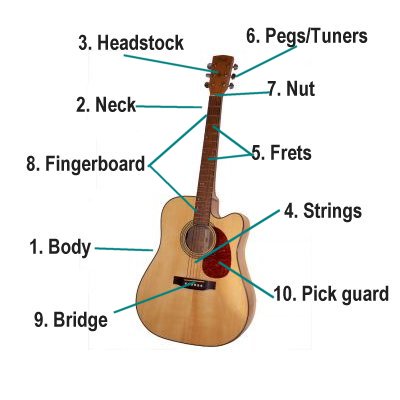

- Names of the parts of the guitar how to#
- Names of the parts of the guitar full#
- Names of the parts of the guitar series#
Please note that these naming conventions apply to our production models only and not to Custom Shop instruments or Artist Signature Editions, or specialty instruments on which the names may vary.
Names of the parts of the guitar series#
The D-28 is part of our Standard Series and is a favorite of many accomplished artists.

Names of the parts of the guitar full#

Names of the parts of the guitar how to#
35/36 = 3-piece solid rosewood back and sides, full gloss finish All the parts of a guitar that you need to know are shown in the diagram below: How to Tune a Guitar.21/28 = Solid rosewood back and sides, full gloss finish.18 = Solid mahogany back and sides, full gloss finish.17 = Solid mahogany back and sides, satin finish.16 = All solid wood (various species), gloss top finish.13 = White body binding, full gloss finish.12 = Black body binding, full gloss finish.11 = Spruce wood top, solid sapele back and sides, gloss top finish.1 = HPL (high pressure laminate) top, back and sides.So make sure to try out a few different styles to see what works best within your budget.īelow I’ve listed the various suffixes for our guitars in order from lowest to highest in style and appointment level: Some people (myself included) love the look of satin finish. Some players prefer the tone they get from a mahogany guitar over a rosewood guitar. It takes a lot of time to add inlay to a guitar so you can expect to spend more on a style 40-45.īut remember, friends, more expensive doesn’t necessarily mean better for everyone. The most obvious appointment is pearl inlay. And full gloss finish will cost more than a satin finish so you can pick up a style 10 model (satin finish) for less than a style 13 (full gloss finish). For example, rosewood is rarer and more expensive than mahogany so a D-28 (rosewood) will be more expensive than a D-18 (mahogany). The style and appointments can be anything from the type of wood that is used for the back and sides of the guitar, to the type of finish used for the body, to the amount of pearl inlay (if any). In the example above, the suffix is a “28” and this indicates the style and level of appointments for this model. Now let’s look at the suffix which is a bit trickier.


 0 kommentar(er)
0 kommentar(er)
